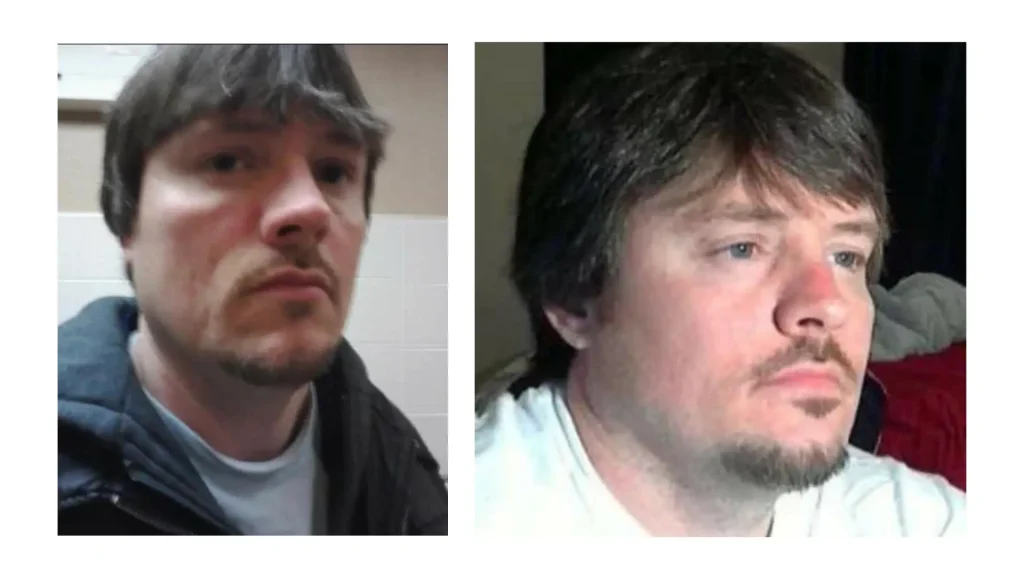
Did you know that the global rejuvenation market may experience a remarkable surge, from a $15 billion value in 2016 to $22.61 billion by 2024? This steady growth mirrors the increasing annual demand for facial rejuvenation treatments as more individuals seek to restore their youthful appearance.
Facial rejuvenation addresses concerns such as volume loss, sagging skin, and diminishing radiance. While surgical options are available, many specialists recommend dermal fillers as a less invasive alternative. Sculptra and Juvederm emerge as safe and effective dermal filler choices for those considering injectables to resolve facial skin issues.
This article will explore and compare Sculptra vs Juvederm and their mechanisms of action, efficacy, patient outcomes, and safety profiles.
Key Takeaways
- Sculptra contains poly-L-lactic acid (PLLA), while Juvederm capitalizes on hyaluronic acid (HA).
- While both showed how they effectively work in patients, Sculptra has shown longer-lasting treatment outcomes than Juvederm injectables.
- It’s worth noting that Sculptra and Juvederm have well-established safety profiles. However, typical side effects, mostly related to the injection sites, may happen after their treatments.
- In RealSelf, Sculptra garnered an average of 76% rating, while Juvederm gathered a high average of 90% user reviews.
- The US Food and Drug Administration approved Sculptra and Juvederm for particular uses in the facial area.
About: Medica Depot is your trusted all-in-one supplier, offering a range of high-quality medical injectables and supplies. Buy Sculptra wholesale at Medica Depot today! Whether for health professionals, plastic surgeons, dermatologists, licensed estheticians, or other specialists, we can offer genuine, brand-name products you may need. With Medica Depot, we prioritize serving you better to improve the patient’s quality of life.
Mechanism of Action

Despite being both minimally invasive dermal fillers, it’s worth comparing Sculptra vs Juvederm regarding their mechanisms of action. They differ in how their injectables work when injected into the skin. Aesthetic practitioners know the most suitable treatment option for each individual, their needs, concerns, and goals.
Specifically, Sculptra’s injection contains poly-L-lactic acid (PLLA), while Juvederm capitalizes on hyaluronic acid (HA). Sculptra offers only one injection compared to Juvederm’s collection of dermal fillers. However, it’s worth noting that both brands have received the approval of the US Food and Drug Administration for their aesthetic and non-surgical injectables.
- How Sculptra Works: After injection, the skin absorbs the PLLA microparticles, helping stimulate and restore natural collagen production. It gradually restores the skin quality and inner structure, reducing the appearance of facial wrinkles and folds.
- How Juvederm Works: This injectable replenishes the lost HA in the treatment area. Juvederm delivers immediate results. It utilizes the Vycross Technology, with its low and high molecular weight HA, to offer longer treatment outcomes. Juvederm effectively hydrates skin, adds volume, and smooths wrinkles in the area after injection.
Sculptra and Juvederm’s Efficacy
Clinical studies have demonstrated the efficacy of both Sculptra and Juvederm in addressing patients’ facial concerns. While both showed how they effectively work in patients, Sculptra has shown longer-lasting treatment outcomes than Juvederm injectables. It can reach up to two years of sustained results, while Juvederm can last up to a year.
According to Fabi et al. (2024), injectable PLLA treatments were well tolerated and significantly reduced the severity of moderate/severe cheek lines and wrinkles while improving skin quality. Effectiveness was durable over the 12-month study period with high subject-reported satisfaction, natural-looking appearance, and enthusiasm for repeat treatments.
Meanwhile, a randomized controlled trial revealed that Juvederm injectable gel could reliably be expected to provide long-term correction, with Juvéderm Ultra lasting more than nine months and Juvéderm Ultra Plus lasting for a year or more.
Safety Profiles
Individuals must thoroughly consult and evaluate their aesthetic providers before proceeding with their Sculptra for jowls treatment or Juvederm for cheek augmentation. This allows providers to create a tailored treatment plan, discuss the entire procedure, and explain the potential Juvederm or Sculptra side effects that may occur.
It’s worth noting that Sculptra and Juvederm have well-established safety profiles. However, typical side effects, mostly related to the injection sites, may happen after their treatments. These typically last for a few days or weeks and may resolve independently. If these persist, patients must seek medical attention for proper management.
- Sculptra Side Effects: Injection site pain, redness, bruising, tenderness, itching and lumps, bleeding, and swelling.
- Juvederm Side Effects: Redness, swelling, pain, and tenderness.
Patient Outcomes
In RealSelf, user reviews for Sculptra and Juvederm have received high ratings from their treated patients. Sculptra garnered an average of 76% rating, while Juvederm gathered a high average of 90% user reviews. Despite their difference in user ratings, these injectables have proven safety and efficacy in addressing facial concerns.
This patient provided a before-and-after Sculptra treatment photo, which required five treatments. Their previous photo showed sunken cheeks. After completing the Sculptra procedure, they improved their cheek region significantly.
 Photo Source: Awesome495554 via RealSelf
Photo Source: Awesome495554 via RealSelf
Many individuals have undergone Juvederm injections for their lip augmentation. After the treatment, this patient immediately saw their filler’s results and was satisfied with their fuller and more defined lips. The patient shared their before and after Juvederm treatment to show their lip enhancement.

 Photo Source: Intellectual929646 via RealSelf
Photo Source: Intellectual929646 via RealSelf
It’s worth noting that Sculptra is superior to Juvederm in addressing the cheek region and facial signs of aging. On the other hand, Juvederm is more versatile in addressing various facial concerns in different treatment areas than Sculptra, such as the lip area.
Practical Considerations
The US Food and Drug Administration approved Sculptra and Juvederm for particular uses in the facial area. Providers should use Sculptra injections for adult individuals with healthy immune systems. Furthermore, this injectable has clinically approved uses in the following facial concerns:
- Nasolabial Folds, Contour Deficiencies, and Other Facial Wrinkles
- Fine Lines and Wrinkles in the Cheek Region
- Signs of Facial Fat Loss
Meanwhile, Juvederm has six hyaluronic acid dermal fillers, each with specific uses for facial concerns. Understanding these differences with Sculptra can help patients and aesthetic providers determine which injectable treatment suits the patient’s problems.
- Juvederm Voluma: Cheeks and Chin
- Juvederm Vollure: Fine Lines
- Juvederm Ultra Plus XC: Fine Lines
- Juvederm Volbella: Lips and Undereyes
- Juvederm Ultra XC: Lips
- Juvederm Volux: Jawline
Moreover, another consideration for patients and aesthetic providers when deciding which treatment to use is the duration of the results. Sculptra and Juvederm have different durations of treatment outcomes, which may still vary depending on individual characteristics, aesthetic goals, and skin condition.
- Sculptra: While most clinical trials revealed that improvements appear after a month, Sculptra can sustain optimal treatment outcomes for up to two years.
- Juvederm: Each injectable has different durations, but Juvederm can generally last six to nine months, with some treatments that may last up to one to two years.
Conclusion
Sculptra and Juvederm offer distinct approaches to facial rejuvenation. Sculptra works gradually, stimulating collagen production for long-lasting volume enhancement, while Juvederm provides immediate results by filling in wrinkles and folds with hyaluronic acid. Both treatments have proven efficacy, with Sculptra lasting up to two to three years and Juvederm between six to 24 months, depending on the specific product used.
Regarding safety and patient outcomes, both have high satisfaction rates and are considered safe when administered by qualified professionals. Practical considerations include treatment areas, with Sculptra ideal for deeper volume loss and facial aging signs and Juvederm for versatility in addressing facial concerns.
FAQs
1. What is the main difference between Sculptra and Juvederm?
Sculptra contains poly-L-lactic acid (PLLA) that aids natural collagen production, thus gradually restoring skin quality and reducing wrinkles. Juvederm, made of hyaluronic acid (HA), immediately replenishes lost HA, adding volume and smoothing wrinkles with results lasting up to a year.
2. How long do the effects of Sculptra and Juvederm last?
Sculptra can offer results lasting up to two years, making it a longer-lasting option than Juvederm, whose effects typically last up to a year. This longevity stems from Sculptra’s stimulation of natural collagen production over time.
3. What are the common side effects of Sculptra and Juvederm treatments?
Both treatments can cause side effects, such as pain, redness, bruising, and swelling. These are usually mild to moderate severity and tend to resolve independently within a few days or weeks. For Sculptra, there may also be itching, lumps, and bleeding, whereas Juvederm-specific side effects were not detailed but can include similar reactions due to the injection process.
References
- Statista. (2024, February 22). Facial rejuvenation market size worldwide from 2016-2026. https://www.statista.com/statistics/988827/facial-rejuvenation-revenue-global-market/
- Facial Volume Loss | JUVÉDERM®. (n.d.). Www.juvederm.com. Retrieved June 17, 2024, from https://www.juvederm.com/volume-loss
Clinical aesthetics products refer to a category of products used in the field of medical aesthetics or cosmetic dermatology. These products are typically designed and formulated to be used under the supervision of healthcare professionals, such as dermatologists, plastic surgeons, or trained aestheticians. They are distinct from over-the-counter cosmetics in that they often contain active ingredients or formulations that require expertise in their application or administration.
Examples of clinical aesthetics products include:
-
Dermal Fillers: Injectable substances used to add volume, smooth wrinkles, and enhance facial contours. Examples include hyaluronic acid fillers like Juvederm and Restylane.
-
Botulinum Toxin (Botox): Injectables that temporarily paralyze facial muscles to reduce the appearance of wrinkles caused by repetitive movements, such as frown lines and crow's feet.
-
Chemical Peels: Solutions applied to the skin to exfoliate and improve its texture. They can treat acne, pigmentation issues, and signs of aging.
-
Laser and Light Therapies: Devices that emit focused light or laser energy to treat various skin conditions, including acne, scars, and signs of aging.
-
Prescription Skincare Products: Formulations containing active ingredients like retinoids (vitamin A derivatives), hydroquinone, or prescription-strength antioxidants to address specific skin concerns under medical supervision.






